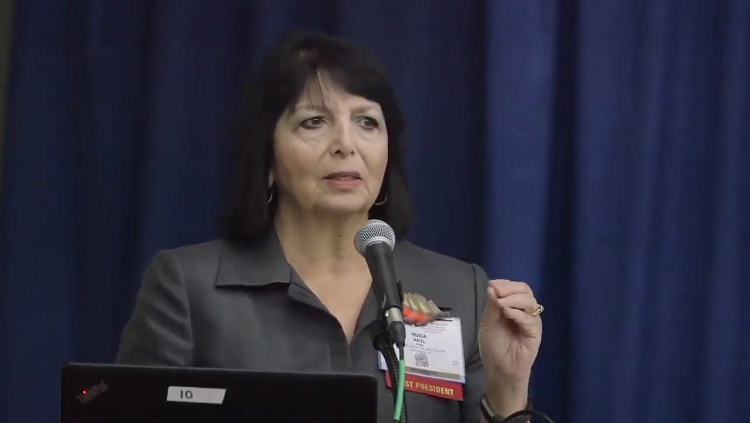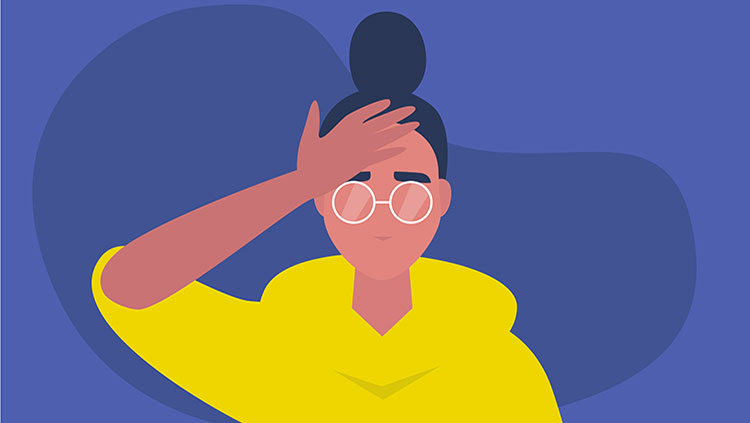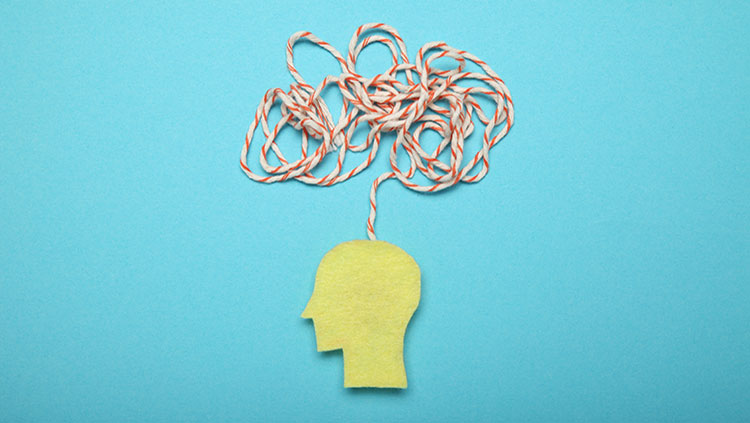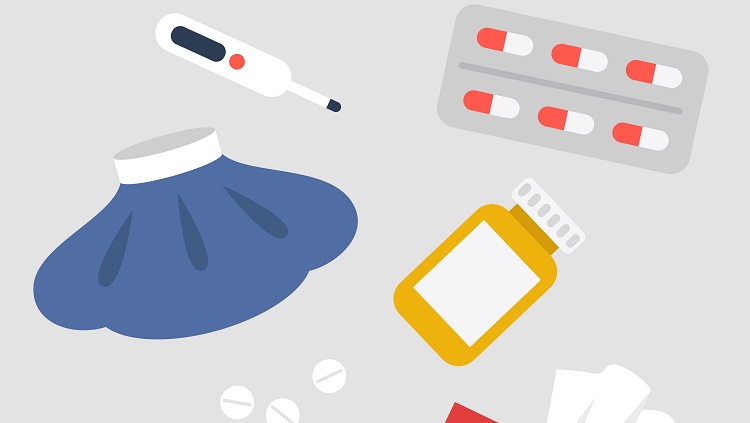Tapping Into the Brain’s Natural Systems for Controlling Stress and Pain
- Published14 Aug 2024
- Author Freda Kreier
- Source BrainFacts/SfN
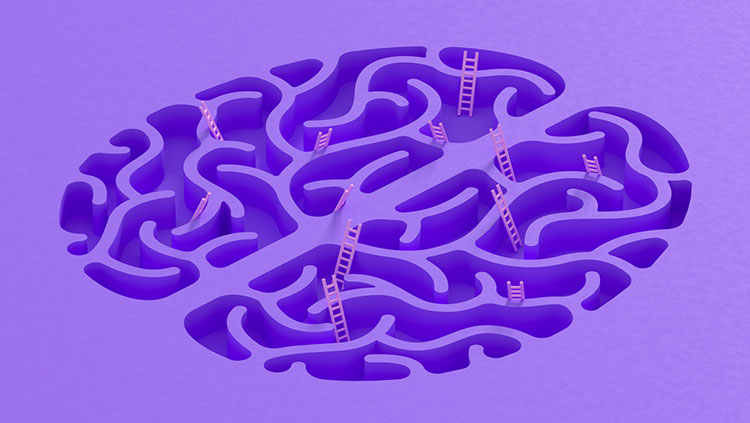
Mental illness — be it depression, anxiety, or substance abuse — has many battlefronts in the brain. It’s a lesson that neuroscientist Huda Akil remembers learning when she examined the inner workings of the brains of people who had died while depressed.
In the early 2000s, Akil, the Garden C. Quarton Distinguished University Professor of Neuroscience at the University of Michigan, was part of a cross-institutional consortium studying how mental illness could change gene expression in the brain. In postmortem research of people with depression diagnoses, Akil and her colleagues found a family of molecules — called fibroblast growth factors, or FGF — was highly changed in people with depression. One in particular, FGF2, was significantly reduced in the brains of depressed people relative to control brains.
Back then, FGFs were primarily known for their role in skin and brain development. Now, the FGF system has been added to the growing list of molecules and pathways, from neurotransmitters to hormones, linked to depression. Her research also found that changes in the activity of many genes were occurring in several brain regions. The finding made Akil realize “the problem is everywhere,” she recalls. “Almost every part of the brain is altered” in depression.
"The problem is everywhere,” she recalls. “Almost every part of the brain is altered.”
Akil and her collaborators would later show how FGF2 can enhance mental resilience — helping vulnerable rodents be more adventurous and less stressed.
Akil and her team injected one-day-old rats genetically inclined to depression and anxiety with a single dose of FGF2. Rats who received FGF2 were less anxious and more prone to exploration than their genetics would have predicted. What’s more, the behavior changes lasted for the life of the animal.
But the environment matters as well. Raising genetically vulnerable animals in an enriched environment can increase their natural FGF2 levels and produce resilience.
This work is part of a growing body of research unveiling the many resources human and animal brains can draw on to soothe distress. Studying these natural stress management strategies could lead to new treatments and a deeper understanding of what makes people vulnerable to depression, how to prevent it, or how to intervene early to minimize its impact.
Discovering The Natural Pain Control System
When Akil became a doctoral candidate at the University of California, Los Angeles in 1969, no one knew about endorphins — the brain’s pain-managing hormones.
Akil didn't start her career as a mental illness specialist. As a freshly minted graduate candidate she focused on pain — the kind you can get from sticking your hand on a hot plate. She and her lab mates were electrically stimulating parts of the brain to see where pain is processed. One day, they stimulated a particular brain region, and noted, to their surprise, the animal seemed to no longer feel any pain or distress.
The team realized rat brains possessed a natural system that worked like morphine. It was the first time anyone had found a natural neural network that blocked pain in the brain. Eventually, other researchers would name the molecules in this pain control system ‘endogenous opioids’ — or endorphins for short.

Neuroscientists became fascinated with this system. One theory as to why the brain would have evolved its natural opiate system to block pain was it was adaptive: It would allow the individual to cope with stress even under highly painful situations to ensure survival — fight or flight. Cloning showed a gene that codes for one of the endorphins also codes for a stress hormone. “It was like a message from the heavens saying: ‘Yes, these two systems are very closely intertwined,” Akil recalls. “Suddenly, I was in the stress business.” Given that stress plays a role in several psychiatric illnesses, including depression, anxiety, and addictive disorders, Akil’s research currently covers all of these areas.
Accounting for Risk Factors
After all, "we all have these inner resources to counter pain and anxiety," says Akil, "So the question is: Why do our natural systems fail?"
Depression often decreases people's ability to respond to negative experiences. FGF2 can help young rats ward off depressive symptoms, suggesting the lack of FGF2 may reduce the brain's ability to make changes in nerve cells, says Marina Picciotto, professor of neuroscience and pharmacology at Yale University. While rats are different from people, these studies are “important in that they point to nerve cell plasticity as an important target for new therapies,” she says.
But it doesn’t mean FGF2 medications will be deployed against depression anytime soon. FGF2 is a growth-promoting molecule and is therefore something of a cancer risk. And while it might be tempting to inject people who are genetically predisposed to depression and anxiety with a curative shot of FGF2, genetics isn’t everything.
Starting in 2016, Akil and her team began recruiting freshmen at the University of Michigan in an effort to work out the main risk factors for developing mental illness when first confronting the stress of a major new life challenge: starting college. Before the COVID-19 pandemic, the team showed the genetic risk for depression was somewhat predictive of who would emerge from their freshman year with one or more episodes of depression or anxiety. When COVID lockdowns struck the United States, depression rates in the freshman cohort skyrocketed. To their surprise, the team found the usual correlation between genetic risk and depression dissolved. Instead, the students’ mindset or emotional make up going into the freshman year was a much better predictor of who suffered most during lockdown.
The study is a reminder of how many factors — be they genetic, environmental, or psychological — play a role in mental illness. “I watched the field try to come up with a simple hypothesis that explains everything,” she says. “And the brain laughs at us and tells us: ‘You fool! That’s not how that works.’”
And the brain laughs at us and tells us: ‘You fool! That’s not how that works.’”
Using FGF pathways to develop treatments are “in early stages but remain very much a high priority,” says Eric Nestler, Nash Family Professor of Neuroscience, and Director of the Friedman Brain Institute at the Icahn School of Medicine at Mount Sinai.
And there are also non-pharmaceutical ways to tap into these pre-installed networks. In one study, Akil and her colleagues found raising rats in an environment filled with toys helped activate the FGF2 systems in their brains. Resilience, says Akil, “is an active process that we can biologically understand and enhance.”
CONTENT PROVIDED BY
BrainFacts/SfN
References
Akil, H., Mayer, D., & Liebeskind, J. (1976). Antagonism of Stimulation-Produced Analgesia by Naloxone, a Narcotic Antagonist. Science, 191,961-962. https://doi.org/10.1126/science.1251210
Evans, S., Choudary, P., Neal, C., Li J., Vawter, M., Tomita, H., Lopez, J., Thompson, R., Meng, F., Stead, J., Walsh, D., Myers, R., Bunney, W., Watson, S., Jones, & E., Akil H. (2004). Dysregulation of the fibroblast growth factor system in major depression. Proceedings of the National Academy of Sciences, 101(43):15506-11. https://doi.org/10.1073/pnas.0406788101
Perez, J., Clinton, S., Turner, C., Watson, S., & Akil H. (2009). A new role for FGF2 as an endogenous inhibitor of anxiety. The Journal of Neuroscience, 29(19):6379-87. https://doi.org/10.1523/JNEUROSCI.4829-08.2009
Turner, C., Clinton, S., Thompson, R., Watson, S Jr., & Akil H. (2011). Fibroblast growth factor-2 (FGF2) augmentation early in life alters hippocampal development and rescues the anxiety phenotype in vulnerable animals. Proceedings of the National Academy of Sciences, 108(19):8021-5. https://doi.org/10.1073/pnas.1103732108
Turner, C., Khalil, H., Murphy-Weinberg, V., Hagenauer, M., Gates, L., Tang, Y., Weinberg, L., Grysko, R., Floran-Garduno, L., Dokas, T., Samaniego, C., Zhao, Z., Fang, Y., Sen, S., Lopez, J., Watson, S Jr., & Akil H. (2023). The impact of COVID-19 on a college freshman sample reveals genetic and nongenetic forms of susceptibility and resilience to stress. Proceedings of the National Academy of Sciences,120(49). https://doi.org/10.1073/pnas.2305779120
What to Read Next
Also In Pain
Trending
Popular articles on BrainFacts.org



